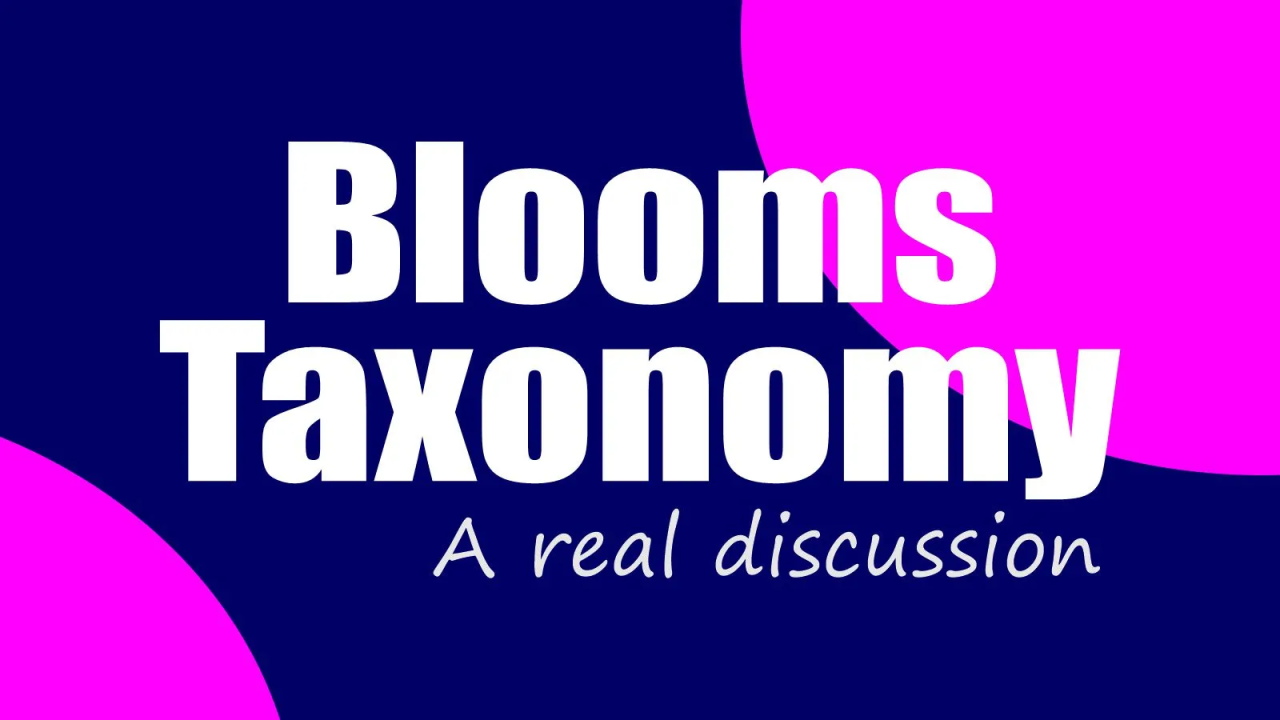
Bloom's Taxonomy: A Guide to Higher-Order Thinking
Bloom's taxonomy is a framework for classifying educational goals. It was first published in 1956 by Benjamin Bloom and a team of educational psychologists. The taxonomy has six levels, arranged in a hierarchical order from simple to complex:
- Remember - Recalling previously learned information

The Six Levels of Bloom & Taxonomy
The Six Levels of Bloom's Taxonomy Ah, here we are - the centrepiece of our blog on Bloom's Taxonomy. Prepare to have your mind expanded, your thinking revolutionized, and your brain cells doing a happy dance. It's time to dive into the six magical levels that make up Bloom's Taxonomy. Get ready to explore Remembering, Understanding, Applying, Analyzing, Evaluating, and Creating! First up, we have Remembering.
This level is all about recalling information. It's like the mental filing cabinet of your brain, where you retrieve those tidbits of knowledge you stored away. Remembering can be as basic as recognizing or recalling facts, or as quirky as reciting random trivia about bubble wrap (did you know it was originally invented to be a textured wallpaper? Talk about a poppin' surprise!). Moving on to Understanding, we ascend the ladder of higher-order thinking. Understanding is all about comprehending concepts and interpreting meanings. Think of it as unravelling the mysteries of the universe... or at least, understanding why people put pineapple on pizza (a debate for another time!). Now, let's take a leap into the land of Applying.
This level involves using acquired knowledge in new and practical ways. It's like being a mad scientist in the lab, mixing and matching ideas to create something new. Remember that time when you used a hairdryer to defrost an ice cream? Well, maybe not the best example of applying knowledge, but you get the idea. Next, we arrive at Analyzing. Here is where the Sherlock Holmes within us comes alive. Analyzing is about breaking down information into its various parts and examining the connections. It's like solving a complex puzzle or figuring out the plot twists in your favourite mystery novel. Who needs coffee when you have Bloom's Taxonomy to keep those synapses firing? Now, it's time to put on your judge's wig and move up to Evaluating.
This level requires you to make judgments and assessments based on criteria. It's like being the Simon Cowell of the thinking world, critiquing and giving feedback on ideas, arguments, or even hairstyles. Just remember, with great power comes great responsibility, so use your evaluating superpowers wisely. Last but not least, we have arrived at the grand finale - Creating. This level is where the true magic happens. It's all about generating new ideas, products, or interpretations. Creating is like being an artist, armed with a paintbrush and a blank canvas, ready to unleash your imagination and leave your mark on the world.
So go ahead and create, my friend, because the world needs your innovative brilliance. And there you have it, a whirlwind tour through the six levels of Bloom's Taxonomy. Remember, understanding, applying, analyzing, evaluating, and creating. Each level builds upon the previous one and takes your thinking to new heights. So embrace the journey, let your mind soar, and don't forget to pack your sense of humour along the way. Happy thinking!

Why is Bloom & Taxonomy Important?
Why is Bloom's Taxonomy Important? Bloom's Taxonomy is important because it encourages higher-order thinking skills. It helps students move beyond mere memorization to truly understanding and applying knowledge. By using Bloom's Taxonomy, educators can design engaging and challenging learning experiences that foster critical thinking and problem-solving abilities. Incorporating Bloom's Taxonomy into teaching methodologies can lead to more meaningful learning outcomes. So, why bother with just remembering facts when you can understand, apply, analyze, evaluate, and even create new things with that knowledge? Bloom's Taxonomy is here to take learning to a whole new level of awesomeness!

Here are some tips for using Bloom's taxonomy in the classroom:
- Start by identifying the learning goals for your lesson or unit. What do you want students to be able to do by the end of the lesson?
- Use the taxonomy to help you choose activities and assessments that will help students achieve those goals. For example, if you want students to be able to analyze information, you might give them a text to read and ask them to write a summary that identifies the main points and supporting evidence.
- Vary the types of activities and assessments you use. This will help students develop a range of thinking skills.
- Provide feedback to students on their performance. This will help them understand how they are progressing and what they need to do to improve.
#instablooms #flowerphotography #life #gardening #flowerpower #musa #macro #art #instagood #tecna #photooftheday #pretty #naturelovers #plant #flowerporn #beauty #insta #flowerstyles #troyesivan #xx #green #gf #machinegunkelly #aisha #picoftheday #mgk #laceup #hoteldiablo #bl #pick

Using Bloom's taxonomy can help students to:
- Develop a deeper understanding of concepts.
- Learn how to apply knowledge in new situations.
- Think critically and creatively.
- Communicate their ideas effectively.
By using Bloom's taxonomy, teachers can create learning experiences that help students reach their full potential.
Conclusion
Bloom's Taxonomy empowers students to think beyond memorization and achieve higher-order thinking skills. It guides them to understand, apply, analyze, evaluate, and create. With this framework, education becomes a piece of cake...except maybe the creating part. #BrainPower #GameChanger